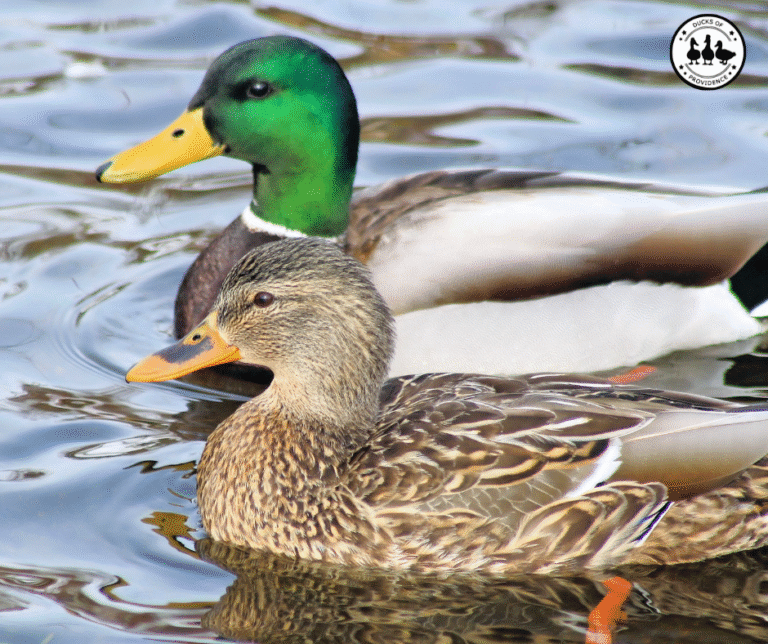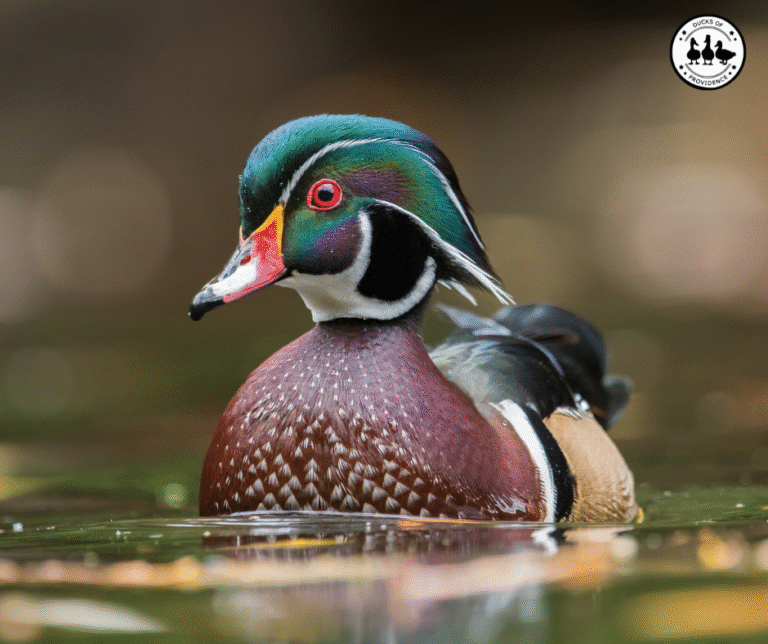
Bumblefoot in Ducks: Symptoms, Causes, and Treatments
Last updated on February 9th, 2025 at 03:21 pm
Duck feet are tough, but even they can’t handle everything! Ever noticed your feathered friend limping? Bumblefoot is a common infection that starts with a minor cut and can quickly become a big problem. Learn how to prevent, spot, and soothe bumblefoot in your feathered friend.
🩺 This article is part of our Duck Health Conditions Series.
Ducks of Providence is free, thanks to reader support! Ads and affiliate links help us cover costs—if you shop through our links, we may earn a small commission at no extra cost to you. Thanks for helping keep our content free and our ducks happy! 🦆 Learn more
What is Bumblefoot?
Bumblefoot is a foot infection known as Plantar Pododermatitis or Foot Pad Dermatitis and often starts as a small abscess or swelling in the footpad.
It usually arises from a minor puncture or cut, allowing bacteria like Staphylococcus and Pseudomonas to enter. These microbes multiply, causing inflammation, pain, and eventually pus accumulation.
Left untreated, bumblefoot can worsen, leading to:
- Larger abscesses: Imagine the tiny bump growing into a painful, pus-filled lump, hindering your duck’s mobility and comfort.
- Joint involvement: The infection can spread to the bones and joints, causing severe pain and lameness.
- Secondary infections: Untreated bumblefoot weakens the immune system, making your duck vulnerable to other infections.

By recognizing the early signs and taking swift action, you can help your feathered friend overcome this injury and get back to their happy waddling ways.

This is the BEST book about ducks I have ever had. I can highly recommend it to every duck owner, new or experienced. It is very comprehensive with pictures and illustrations. It covers all topics related to duck care (including bumblefoot) and keeping ducks. It even has multiple case studies.
What Causes Bumblefoot?
Bumblefoot, or pododermatitis, is a common but preventable condition in ducks that results from infection and inflammation in their footpads. Understanding the underlying causes is crucial to minimizing the risk and keeping your flock healthy and comfortable.
1. Environmental Factors
The condition often starts with minor cuts, scrapes, or pressure sores that create an entry point for bacteria. Environmental conditions play a significant role:
- Rough Surfaces: Ducks walking on hard, uneven, or sharp surfaces—like gravel, concrete, or coarse wood chips—can develop micro-injuries on their feet. Over time, these tiny abrasions may worsen.
- Dirty Bedding or Muddy Runs: Unsanitary conditions can expose wounds to harmful bacteria such as Staphylococcus aureus. For example, damp, soiled straw or constant exposure to standing water can weaken the skin barrier, making infections more likely.
- Improper Perching Materials: If your ducks (mostly important for Muscovy Ducks) have access to elevated areas or roosts that are too hard or narrow, this can put undue pressure on their footpads.
2. Weight and Body Condition
Excess weight significantly increases the strain on a duck’s feet:
- Obesity: Overweight ducks exert more pressure on their footpads, making them more prone to developing pressure sores.
- Heavy Breeds: Larger breeds, like Pekins or Muscovy ducks, are naturally at a higher risk due to their weight and size, even when they’re in good condition. Providing softer ground and frequent activity helps mitigate this risk.
3. Health Conditions
Underlying health issues can exacerbate or predispose ducks to bumblefoot:
- Compromised Immune Systems: Ducks recovering from illness or dealing with chronic conditions may heal more slowly, giving bacteria an extended opportunity to infect even minor wounds.
- Vitamin A Deficiency: This nutrient is essential for maintaining healthy skin and tissue repair. Ducks with a diet lacking in Vitamin A may have drier, less resilient skin on their feet, increasing their susceptibility to injury and infection.
By addressing these root causes, you can significantly reduce the occurrence of bumblefoot in your flock. Routine health checks, proper nutrition, and a clean, duck-friendly environment all go a long way in prevention. If you’d like, we can also add practical tips for prevention or expand on how to spot early signs of bumblefoot.

Preventing Bumblefoot
Prevention is always better than cure, and keeping bumblefoot at bay is all about creating a safe and healthy environment for your ducks. Here are some key steps:
- Pen maintenance: Regularly remove sharp objects like rocks, sticks, nails, and debris from your duck’s enclosure.
- Proper bedding: Provide ample soft bedding, like straw or wood shavings, to cushion their feet and absorb moisture. Artificial Turf is an excellent option for the duck run.
- Cleanliness is key: Regularly clean and disinfect the pen and water sources to prevent bacterial growth.
- Variety is the spice of life: To distribute pressure on your ducks’ feet, offer them access to areas with varied terrain, including grass, dirt, and shallow water.
- Foot hygiene: Regularly trim your duck’s nails to prevent them from snagging on objects and creating entry points for bacteria.
Prevention Enhancements: Improving Your Ducks’ Habitat
Creating a safe and comfortable environment is one of the best ways to prevent bumblefoot. Ducks spend much of their time on their feet, so thoughtful choices in their habitat can make a significant difference. Here’s how you can elevate their living conditions:
1. Soft Surfaces: Cushioned Comfort for Happy Feet
Soft, supportive surfaces reduce foot injuries and protect against the development of bumblefoot. Over time, we’ve experimented with different options and found what works best:
- Recommended Bedding Materials:
- Pine Shavings: These are affordable, soft, and absorbent. Opt for kiln-dried shavings to prevent mold and reduce moisture.
- Hemp Bedding: Soft and highly absorbent, hemp bedding is an excellent option for indoor pens, though it can be more expensive.
- Rubber Mats or Foam Mats: Placing rubber stall mats in high-traffic areas like feeding stations creates a cushioned, easy-to-clean surface.
- Premium Artificial Turf: After struggling with hard, muddy terrain in our outdoor run, we switched to high-quality, pet-friendly artificial turf. This turf has longer “grass” for comfort and built-in drainage holes, making it ideal for ducks. It’s gentle on their feet and prevents issues like bumblefoot while also keeping the area clean and mud-free. This has been a game-changer for our flock, and after over two years of use, I couldn’t be happier with the results.
➡️ Read how astro turf has transformed our experience
➡️ Read about the best options for bedding
2. Regular Inspections: Identify and Eliminate Hazards
A clean, hazard-free pen reduces the risk of foot injuries. Make it a habit to check the environment regularly:
- Weekly Walkthroughs: Inspect for hazards such as:
- Sharp rocks or hidden debris like glass shards or nails.
- Uneven ground or splinters on wooden ramps.
- Routine Cleaning: Replace soiled bedding and rinse artificial turf regularly to remove debris and prevent bacterial growth.
3. Duck-Friendly Terrain: Keep It Varied and Engaging
Incorporating diverse surfaces can help reduce foot strain and encourage natural behaviors:
- Grass Areas: Allowing ducks to roam on soft grass provides a natural and gentle surface. Rotate areas to prevent overuse and mud patches.
- Sand Zones: A small, clean sandpit gives ducks a place to dig and forage while gently exfoliating their feet.
- Shallow Water Features: Kiddie pools, small ponds, or trays of water let ducks paddle and stand, reducing pressure on their feet.
For our ducks, a combination of artificial turf, shallow water areas, and access to grass has created a balanced and foot-friendly environment. This variety keeps them entertained while promoting healthy feet.
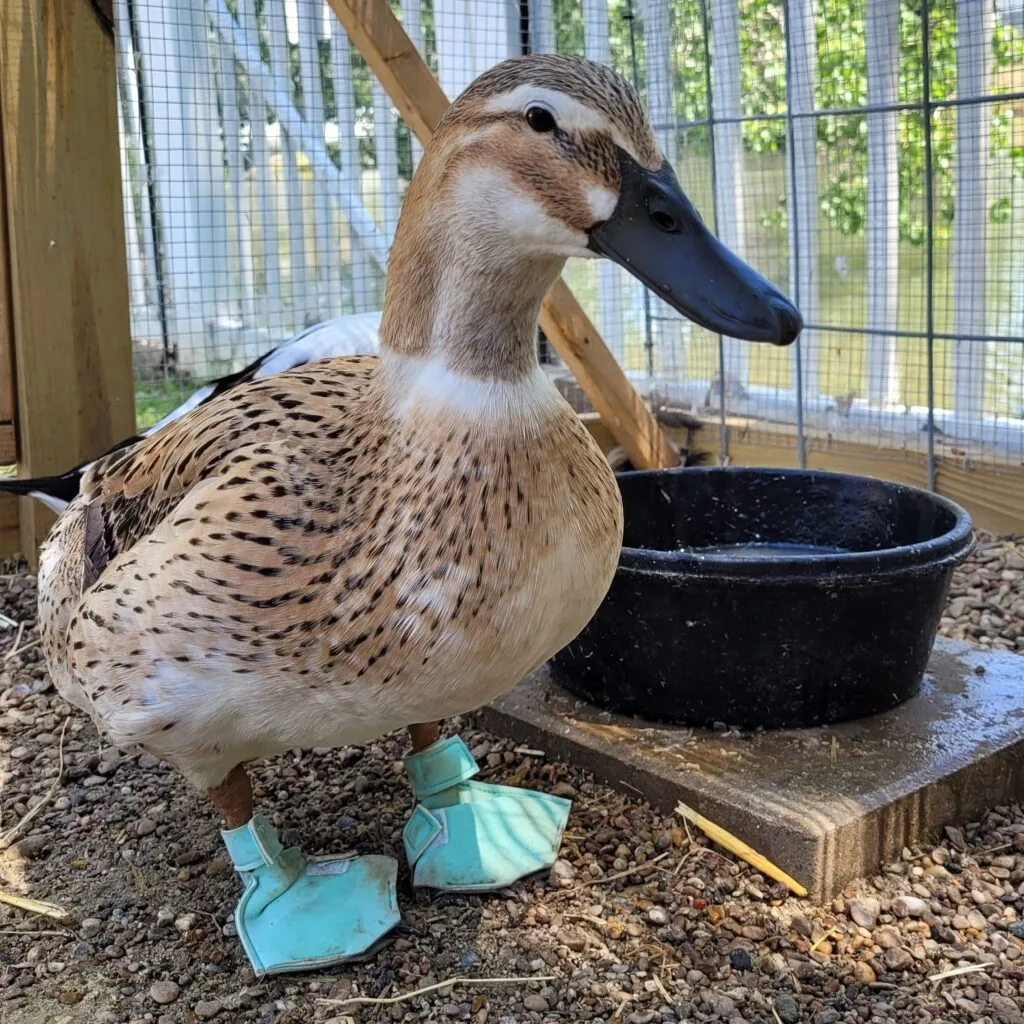
Bonus Tip: Combine Safety with Enrichment
Incorporate natural elements like logs, low ramps, or soft mounds of dirt for ducks to explore. Just make sure all additions are smooth and free from rough edges to avoid injuries.
By optimizing your ducks’ environment with these improvements, you’re not just preventing bumblefoot—you’re fostering a happy, healthy flock! Would you like me to add suggestions for other preventative measures, like nutritional support or foot care routines?
Recognizing Bumblefoot in Ducks
Bumblefoot, though it sounds cute, can be a painful and serious issue for your ducks. Fortunately, your feathered friend can quickly bounce back quickly with early detection and proper care. Here’s how to spot the telltale signs of bumblefoot in ducks:
Early Stages of Bumblefoot in Ducks:
- Redness and swelling: Look for localized redness and inflammation around the footpad, especially near cuts or punctures.
- Tenderness and limping: Your duck may favor the non-affected foot, limping or holding it up when walking or standing.
- Warmth to the touch: Feel the footpad for any abnormal warmth, a sign of infection.
- Loss of appetite or decreased activity: These can be general signs of infection or pain.
- Scab formation: A small black scab spot, not larger than a pinhead, may appear in the early stages.
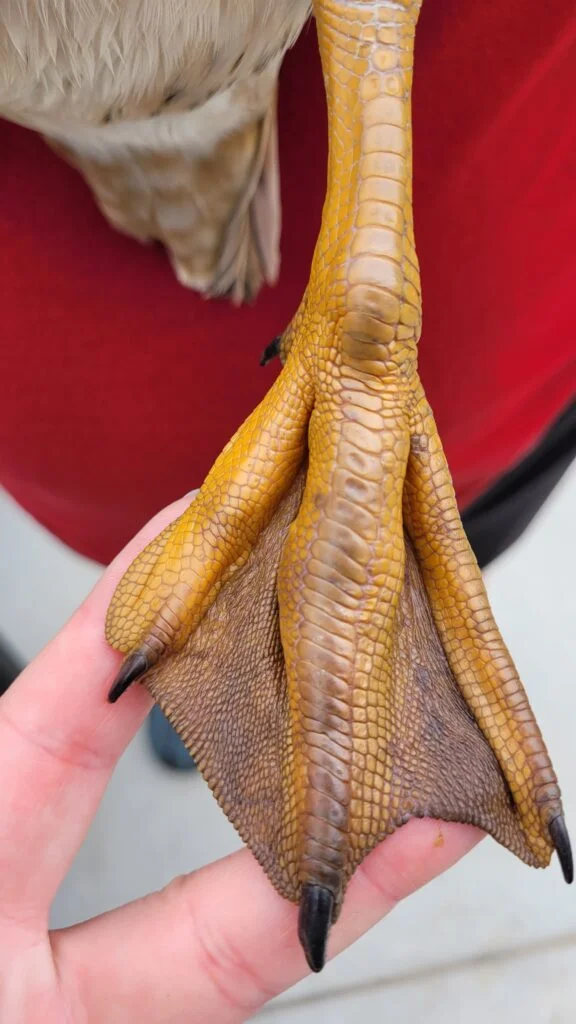
Advanced Stages of Bumblefoot:
- Large black scab: As bumblefoot worsens, the scab expands while the surrounding tissue inflames, turning puffy and red.
- Abscess formation: A small, hard bump may develop, growing into a pus-filled abscess over time.
- Loss of scales: The skin on the footpad may become rough, scaly, and lose its natural texture.
- Discharge of pus: Pus, often yellow or white, may ooze from the abscess or scabbed area.
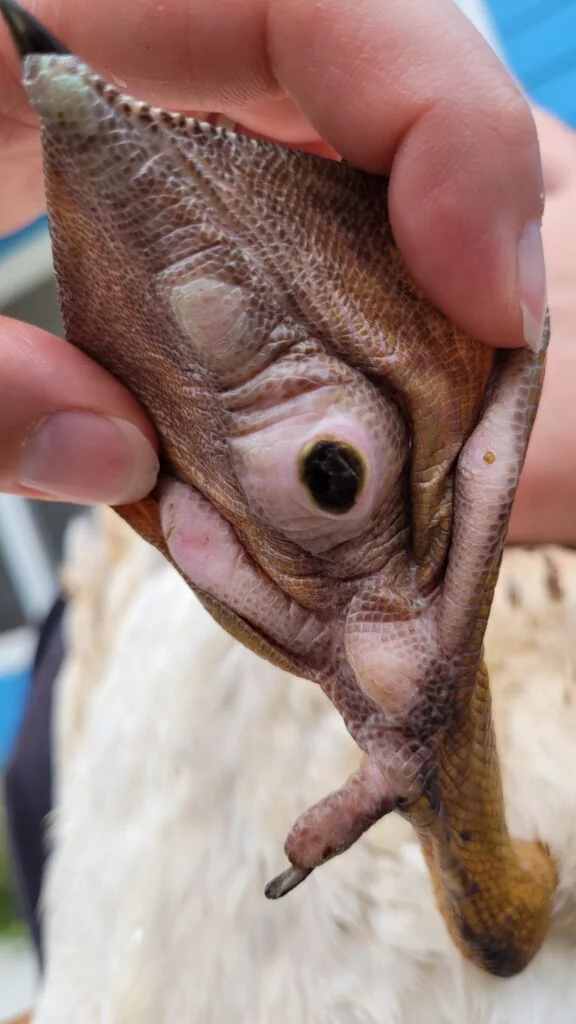
How Do You Treat Bumblefoot?
If you suspect your bird has bumblefoot, immediate action is crucial. Treatment options for bumblefoot in ducks (and chicken) depend on the severity of the case.
In mild cases, treating bumblefoot should take no more than one to two weeks. In severe cases, it may take weeks to months. So don’t give up! It is normal for it to take longer.
Home Care Tips to Treat Bumblefoot
Bumblefoot, if left untreated, can cause severe discomfort and complications for your ducks. Here’s a detailed guide to addressing the condition effectively, with a strong emphasis on each crucial step, including the importance of proper bandaging for a successful recovery.
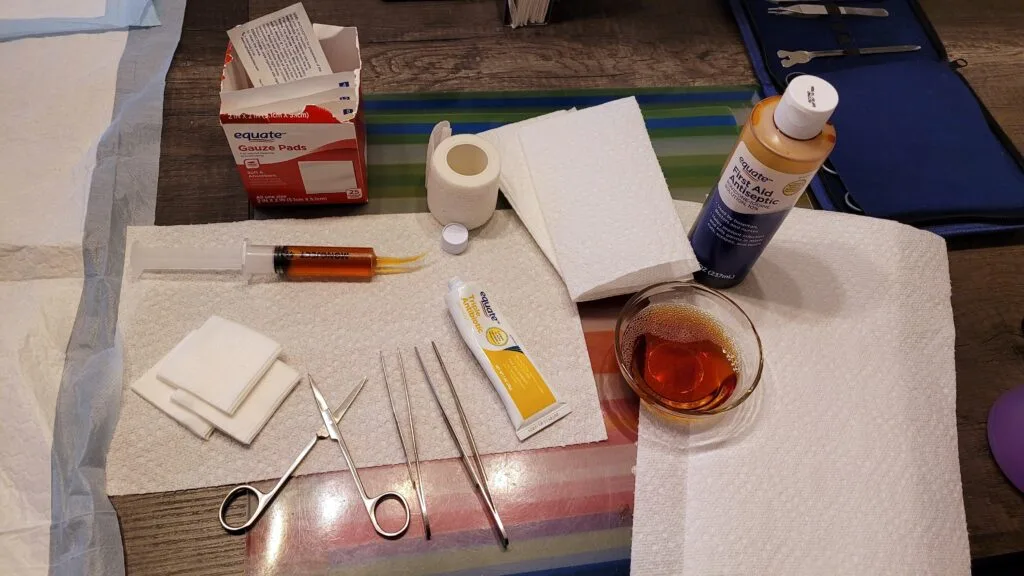
1. Create a Recovery Zone: Isolation for Rest and Healing
Recovery begins with creating a calm and safe environment for your duck. Isolation minimizes stress and prevents the injury from worsening.
- Why Is Isolation Important?
- Prevents the affected duck from walking excessively, reducing pressure on the injured foot.
- Protects the duck from flockmates who may inadvertently cause further harm.
- How to Set Up a Recovery Space:
- Use a small playpen or a designated area in your coop.
- Line the space with soft, clean bedding materials, such as straw, pine shavings, or rubber mats, to cushion their feet.
- Ensure the area is quiet and free from disturbances to allow for restful recovery.
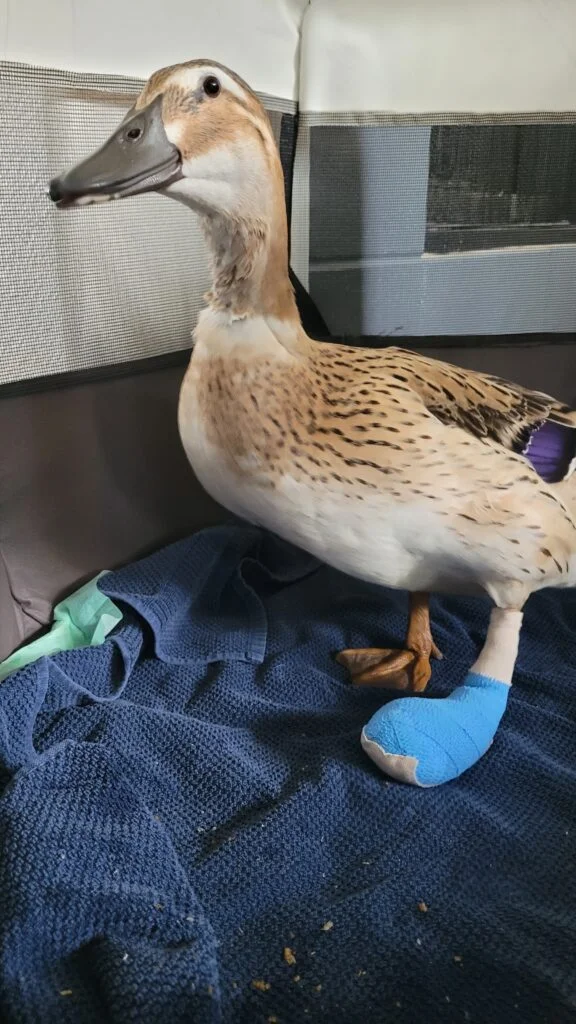
2. Soothing Soaks: Epsom Salt and Betadine Solutions
Foot soaks are a cornerstone of bumblefoot treatment, offering pain relief, reducing swelling, and softening the scab for easier treatment.
- Epsom Salt Soaks:
- How to Use: Dissolve 1–2 tablespoons of fragrance-free Epsom salt in warm water.
- Soak the affected foot for 10–15 minutes, 2–3 times daily.
- Benefits: Reduces inflammation, relieves discomfort, and softens the scab to prepare for further treatment.
- Betadine Soaks:
- How to Use: Mix Betadine with warm water until the solution resembles weak tea.
- Benefits: Disinfects the wound, killing bacteria and preventing infection.
- Combined Treatment: For enhanced results, combine Epsom salt and Betadine in a single soak.
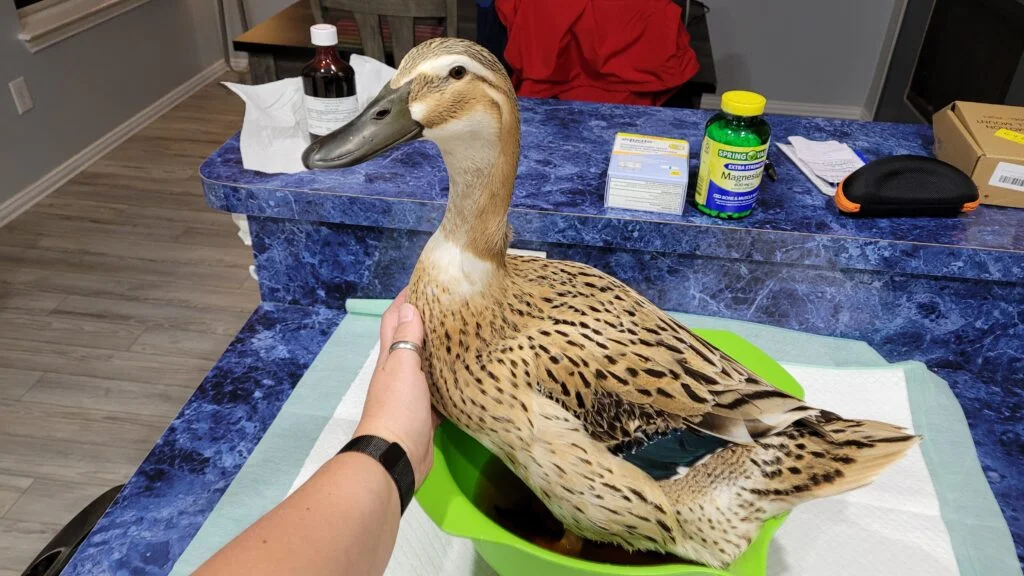
Pro Tip: Place your duck in a shallow tub or container with a non-slip bottom during soaks to keep them comfortable and secure.
3. Wound Care: Topical Treatments to Promote Healing
After soaking, cleaning and treating the wound is essential to prevent infection and encourage recovery. Choose treatments based on the severity of the case:
- Vetericin Spray:
- Apply this antimicrobial spray, such as Vetericin, several times daily to keep the wound clean and promote healing.
- Ideal for mild to moderate cases.
- Antibiotic Ointments:
- Use products like Neosporin (without pain relievers) once or twice daily.
- Provides a barrier against bacteria and accelerates healing.
- Silver Sulfadiazine Cream:
- A prescription cream with antibacterial and antifungal properties.
- Alternative: Use colloidal silver gel, such as Sovereign silver gel, as a natural option.
- Manuka honey:
- Known for its powerful antimicrobial properties, Manuka honey can be applied directly to the wound to fight infection and promote tissue regeneration.

Tip: Always ensure the wound is clean and dry before applying any treatment.
4. The Importance of Bandaging: Protecting the Wound
Proper bandaging is a critical yet often overlooked step in bumblefoot treatment. It protects the wound, supports healing, and prevents re-injury.
- Why Bandage the Wound?
- Shields the wound from dirt, bacteria, and moisture.
- Helps retain topical treatments on the affected area.
- Prevents the duck from pecking at or worsening the wound.
- How to Bandage Effectively:
- Clean and Dry the Foot: After soaking and treating the wound, ensure the foot is completely dry.
- Apply a Non-Stick Gauze Pad: Place the gauze pad over the wound to protect it and hold treatments in place.
- Secure with Veterinary Wrap: Use flexible Vet wrap to cover the foot, ensuring a snug but not overly tight fit to avoid cutting off circulation.
- Change Daily: Replace the bandage at least once a day or after the duck has been in water.
Duck Shoes:
Duck booties are a fantastic tool for protecting and cushioning your duck’s sensitive feet, especially if they are dealing with bumblefoot or walking on rough surfaces. These soft, padded coverings reduce pressure on their “cheese feet” (the affectionate term for their plump, webbed toes) and help prevent further irritation or injuries. Duck booties can also keep bandages secure and clean during treatment, promoting faster healing. For ducks that are healing or need extra support, booties provide an added layer of comfort and safety, making them a valuable addition to your duck care toolkit.
5. Epsom Salt Poultice or PRID for Stubborn Cases
When daily soaks are difficult or ineffective, an Epsom salt poultice can be a game-changer.
For ducks with stubborn or severe bumblefoot infections, both Epsom salt poultices and PRID Drawing Salve are excellent options for drawing out infection and promoting healing. Either method can be used, depending on your preferences or what you have on hand.
Epsom Salt Poultice
An Epsom salt poultice is a reliable option for soothing pain, reducing inflammation, and drawing out infections. For convenience and ease of use, pre-made poultices such as Kaeco Epsom Salt Poultice and Durvet Epsom Salt Poultice are excellent choices. These products come ready to apply, saving you the hassle of mixing your own. Simply spread the poultice over the affected area, cover it with a sterile gauze pad, and secure it with a bandage, like vet wrap. The poultice can be left on for up to 24 hours before replacing with a fresh application.
PRID Drawing Salve
Alternatively, PRID Drawing Salve is a natural, homeopathic remedy that works well to extract infections and toxins. Simply apply a small amount of the salve directly to the wound, cover it with a gauze pad, and wrap the foot with a bandage to protect the area. PRID is particularly useful for treating stubborn infections, and its easy application makes it a great choice for ducks that may resist more intensive treatments.
Both treatments can be used effectively on their own. If you wish, you can rotate between the two or choose the one that works best for your duck’s specific needs. Always ensure the wound is clean before applying either treatment, and keep the area securely bandaged to prevent dirt and bacteria from complicating the healing process.
- How to Use:
- Apply a thick layer of Epsom salt poultice or PRID directly to the wound.
- Cover with a non-stick gauze pad and bandage securely.
- Leave in place for 24 hours or longer to draw out infection and soothe the wound.
- Benefits: Excellent for persistent cases or when ducks resist soaking.
6. Minor Bumblefoot Surgery (For Severe Cases)
If the infection is advanced, manual removal of the infected material may be necessary. This procedure should be approached with caution:
- Procedure:
- After a long Epsom soak, gently scrape off the softened black scab with a scalpel or tweezers (we have a medical student dissecting kit).
- Remove the yellow, hardened pus beneath the scab.
- Clean the area thoroughly with betadine solution and apply antibacterial treatment.
- Bandage the foot as described above.
- When to Seek Help: Consult a veterinarian if you’re unsure about performing this procedure or if the infection appears severe.
7. Nutritional Support to Boost Recovery
A balanced diet rich in vitamins and minerals can strengthen your duck’s immune system and speed up healing.
- Dietary Enhancements:
- Offer high-quality duck feed that meets their nutritional needs.
- Add fresh, vitamin-rich greens like spinach or kale.
- Consult your vet about supplements, such as probiotics or vitamin A and E, to support healing.
Advanced Treatment Options
Veterinary Care
In severe cases of bumblefoot, antibiotics, painkillers, and even surgery might be necessary.
- Antibiotics: Oral or topical antibiotics can combat the bacterial infection.
- Pain relievers: Medication can help manage your duck’s discomfort.
- Debridement and cleaning: In severe cases, the veterinarian might need to clean the abscess and remove any foreign objects surgically.
Surgical Interventions for Bumblefoot
In advanced cases of bumblefoot, where non-invasive treatments like Epsom salt soaks and topical medications fail to resolve the infection, surgical debridement may become necessary. This procedure can effectively remove deep-seated infections and necrotic tissue, giving your duck the best chance at recovery. Here’s a detailed look at what to expect:
What to Expect During Surgical Debridement
A veterinarian experienced with avian care will perform the procedure under sterile conditions. Here are the typical steps involved:
- Initial Examination: The vet will assess the severity of the infection, often using X-rays to determine if the infection has spread to the bones (osteomyelitis).
- Sedation or Anesthesia: For the duck’s comfort and safety, light sedation or anesthesia may be administered.
- Cleaning and Debridement: The vet will thoroughly clean the area, removing any abscesses, necrotic tissue, or hardened cores of infection (called “plugs”).
- Wound Treatment: After cleaning, the wound is treated with antimicrobial solutions, and in some cases, a small drainage incision may be made to allow fluids to exit.
- Bandaging: The wound is carefully bandaged with sterile gauze, often layered with medicated dressings to aid healing and reduce infection risk.
After the procedure, the vet may prescribe oral or injectable antibiotics to address any systemic infection and pain medication to ensure your duck’s comfort during recovery.

Cost Range
The cost of surgical intervention varies depending on:
- The Severity of the Case: Minor surgeries for shallow infections will cost less than those requiring extensive tissue removal or bone cleaning.
- Geographic Location: Prices can differ significantly between urban and rural veterinary practices.
- Follow-Up Care: Costs may include recheck appointments, additional wound care supplies, or extended antibiotic courses.
Expect to pay between $300 and $900, though costs may be higher if complications arise.
Post-Surgical Care
Proper aftercare is critical for a successful recovery and to prevent recurrence.
- Clean, Dry Recovery Area: Ducks recovering from surgery must be kept in a clean, dry enclosure away from dirt, mud, and water to reduce the risk of re-infection. Use soft bedding materials like towels, fleece, or clean straw to cushion their feet.
- Frequent Bandage Changes: The wound will need regular bandage changes, often daily or every two days, to ensure the area remains sterile. Your vet will provide specific instructions for this process.
- Pain Management and Medications: Administer all prescribed medications as directed. Pain management is vital to keeping your duck comfortable and promoting healing.
- Limited Activity: Restrict your duck’s movement during recovery to avoid pressure on the affected foot. A small, confined space works best to minimize strain.

Signs of Recovery
- Reduced Swelling: Within a few days, you should notice a decrease in inflammation around the wound.
- Healing Skin: Healthy tissue will begin to form, and scabs should remain clean and intact.
- Normal Behavior: As your duck heals, it will regain energy and interest in food and activities.
If swelling, redness, or limping worsens, contact your vet immediately, as these may indicate complications.
While surgical intervention can be daunting, it is often the best course of action for severe bumblefoot cases. With diligent aftercare and a clean environment, your duck has an excellent chance of making a full recovery.
Final Thoughts on Bumblefoot Treatments
Early intervention is key to a successful recovery. Don’t hesitate to seek veterinary advice if you notice any signs of bumblefoot in your duck.
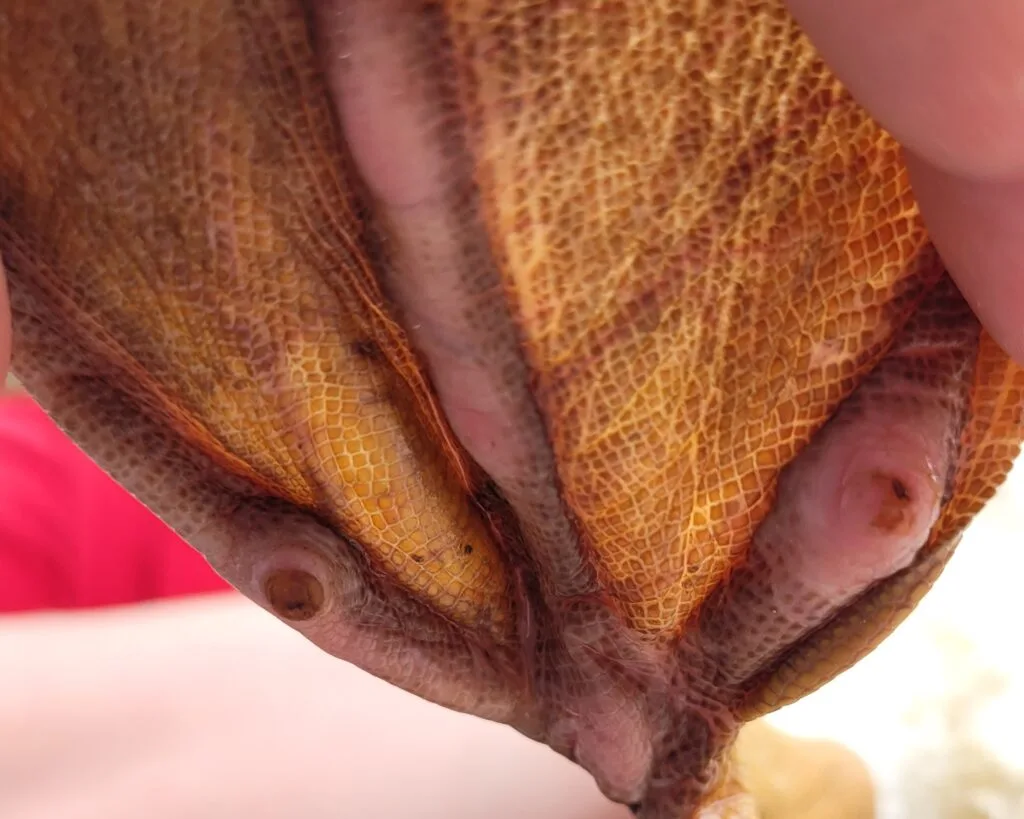
Treating bumblefoot requires patience, consistency, and proper care. By combining the steps above with regular monitoring and effective bandaging, you can help your duck recover fully and prevent future issues.
By following these tips, you can create a safe haven for your ducks and minimize the risk of bumblefoot. And remember, a little prevention goes a long way in keeping your feathered friends healthy and happy!
Would you like recommendations for specific products or need help with monitoring recovery signs?











